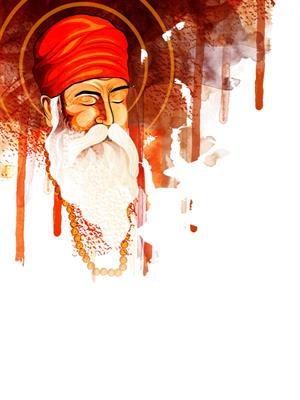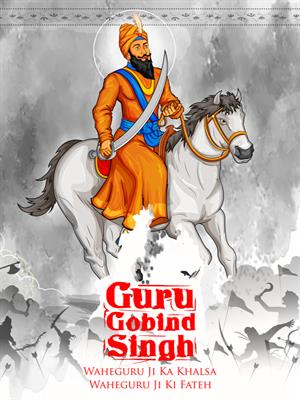
PUMPA - SMART LEARNING
எங்கள் ஆசிரியர்களுடன் 1-ஆன்-1 ஆலோசனை நேரத்தைப் பெறுங்கள். டாப்பர் ஆவதற்கு நாங்கள் பயிற்சி அளிப்போம்
Book Free DemoGuru Nanak and Sikhism:
He was born in \(1469\) in Talwandi Rai, Lahore which was later renamed as “Nankana Sahib”. He was a spiritualist right from a young age.

Guru Nanak
Nanak organized inter-faith dialogue among various other religious leaders at the beginning of the \(16^{th}\) Century, which helped him to gain more broad views about contemporary religions and their tenets.
Adi Granth: The teachings of Guru Nanak were compiled by one of his followers “Guru Arjun Dev”, which was named “Adi Granth”. Post some additions to the text during the period of Guru Gobind Singh, this text was renamed as “Guru Granth Sahib”.
Guru Nanak was considered as the First Sikh guru whose teachings and principles made his followers establish a new religion called “Sikhism” in the second half of the 15th century.
Teachings of Guru Nanak:
Guru Nanak was a social reformer and Philosopher during his period who fought for an egalitarian society and opposed caste-based discrimination. His idea of equality went on to spell three ideals they are.

Langar: Cooking for a large number of people and Sharing food.
Pangat: Eating of food without caste distinctions (Sitting equally while eating).
Sangat: Making decisions collectively.
These practices propounded by Nanak challenged caste-based oppression and discrimination directly for a long period.
Dasvandh: This was a concept propounded by Nanak, as it means donating one-tenth of a person’s earnings to poor and downtrodden people.
He also firmly believed in the concept that “all are born equal” and the entire world is God’s creation. Nanak urged his followers to perform meditation to attain the path of Salvation.
Kartarpur Sahib Corridor
Guru Nanak established a Gurudwara in Kartarpur, Lahore, situated on the banks of River Ravi. Nanak assembled his followers and spent his last days in this place.
Guru Nanak established a Gurudwara in Kartarpur, Lahore, situated on the banks of River Ravi. Nanak assembled his followers and spent his last days in this place.
The Indian government had recently announced a corridor dubbed as the "road to peace" will be built to connect the Darbar Sahib Gurudwara in Pakistan and Dera Baba Nanak Shrine in Gurdaspur District, India.
Guru Gobind Singh:

Guru Gobind Singh
He was born in Bihar in \(1666\) and became the \(10^{th}\) Sikh guru (last of the Sikh guru) at the very young age of Nine.
Turban: Guru Gobind Singh introduced the practice of covering the hair of Sikh people using a Turban.
He also fought a battle against the Mughals known as the “Battle of Muktsar” in \(1705\).
Post the death of Gobind Singh, the holy book of Granth Sahib was considered as the guru of the Sikh religion.
Post the death of Gobind Singh, the holy book of Granth Sahib was considered as the guru of the Sikh religion.
The Khalsa Cult and the Five K’s:
Gobind Singh was instrumental in purifying the religion by introducing a cult called “Khalsa” which means pure. The followers of the Khalsa cult are mandated to follow some practices which are known as the “Five K’s”.
Kesh – Uncut Hair.
Kada – Steel Bangle.
Kirpan- Dagger.
Kuchera – Underpants.
Kanga – Wooden comb.